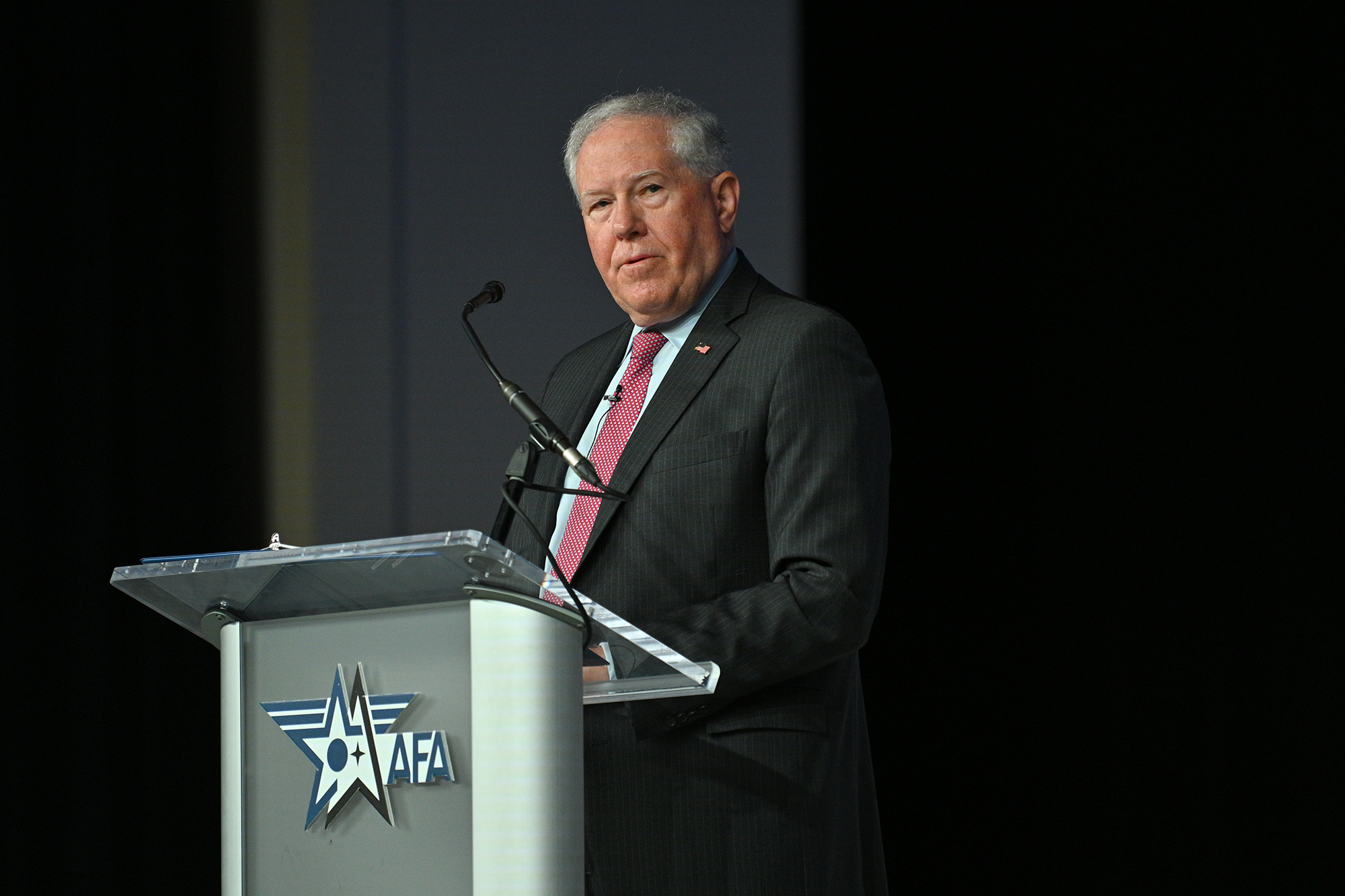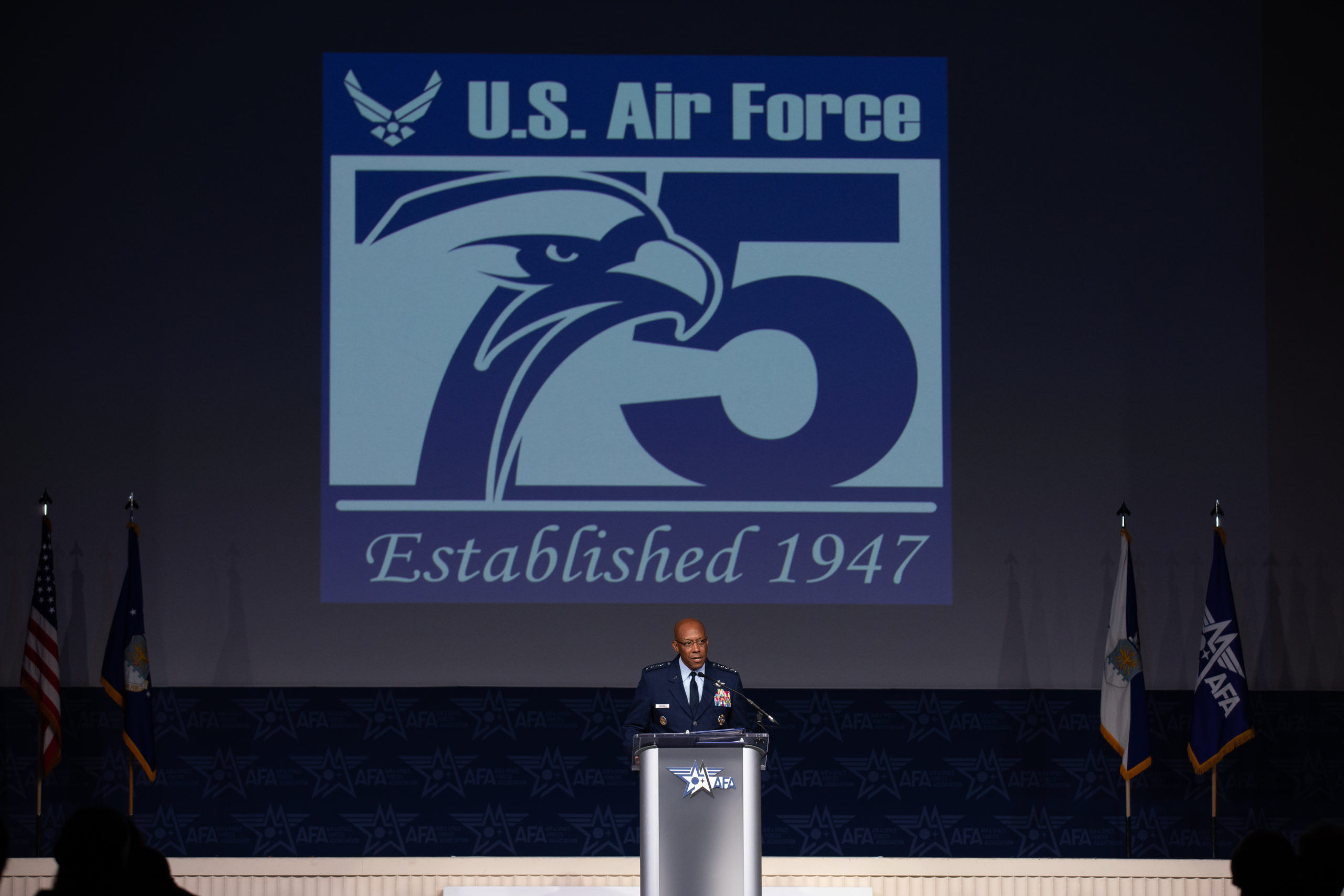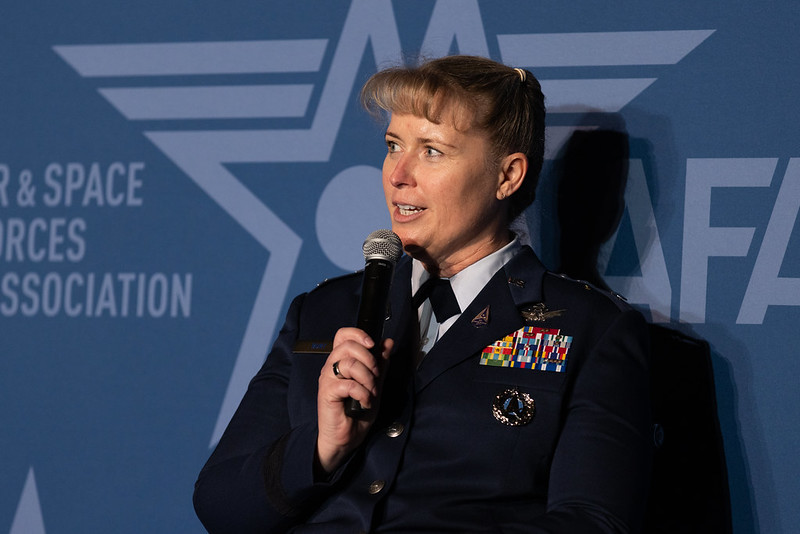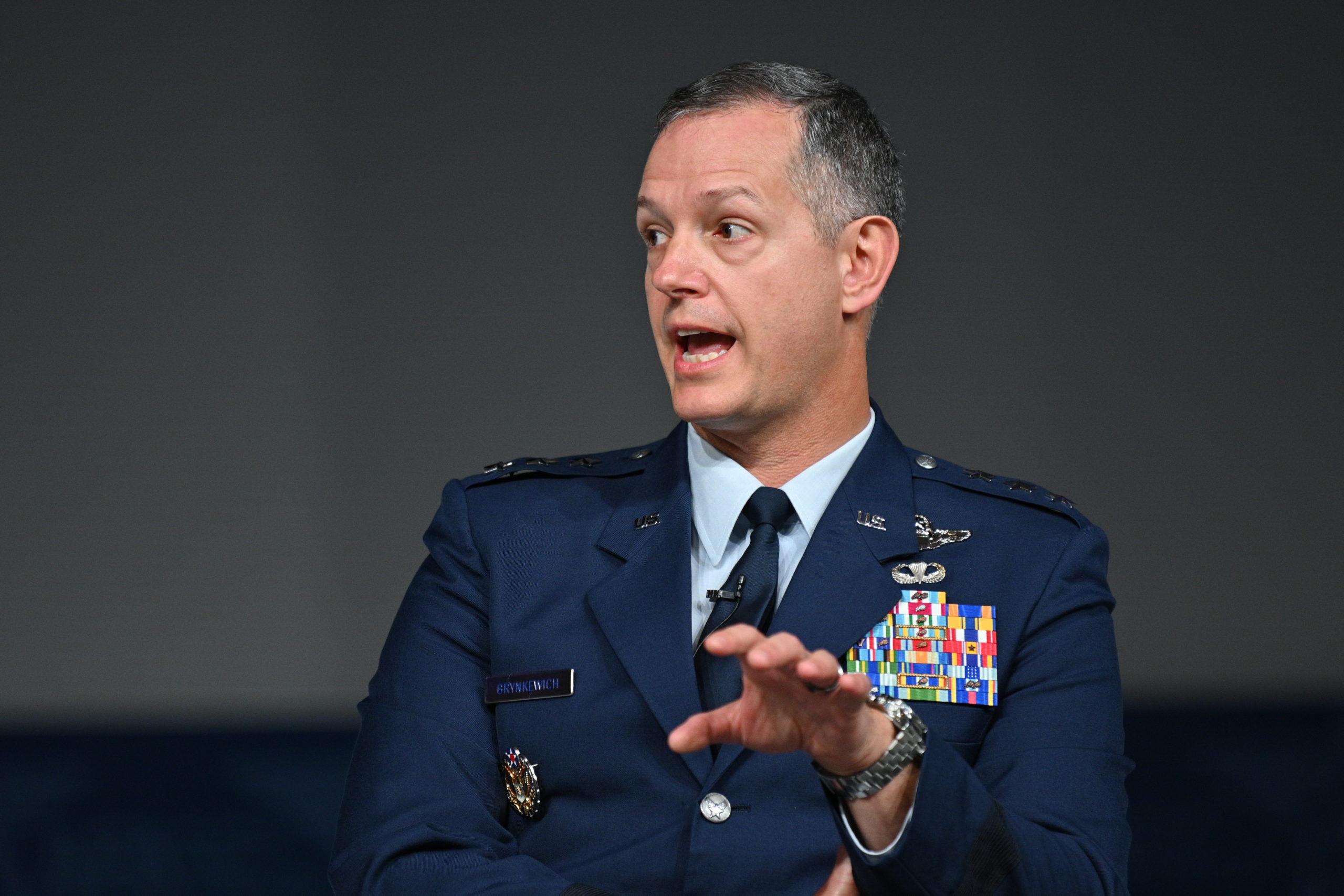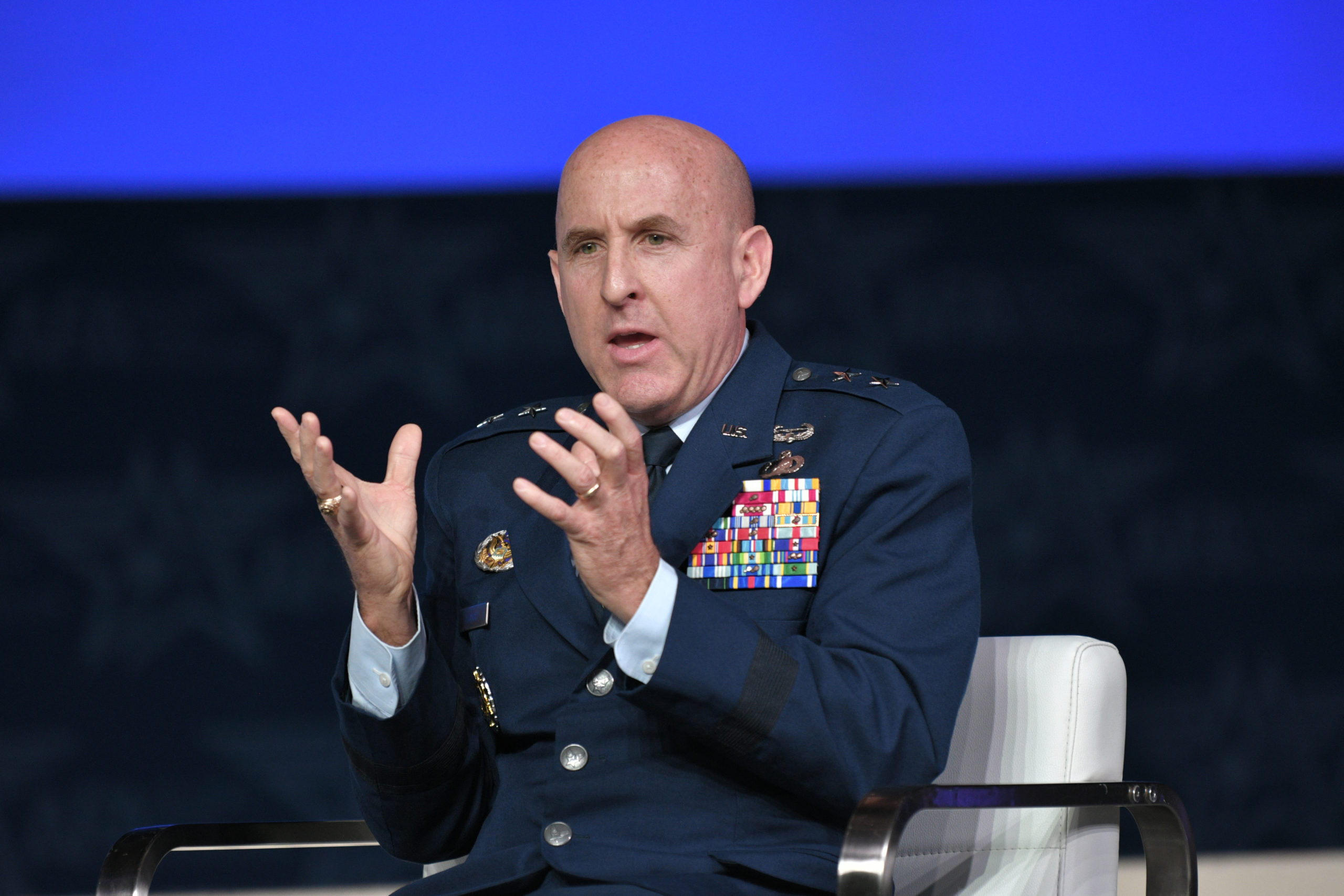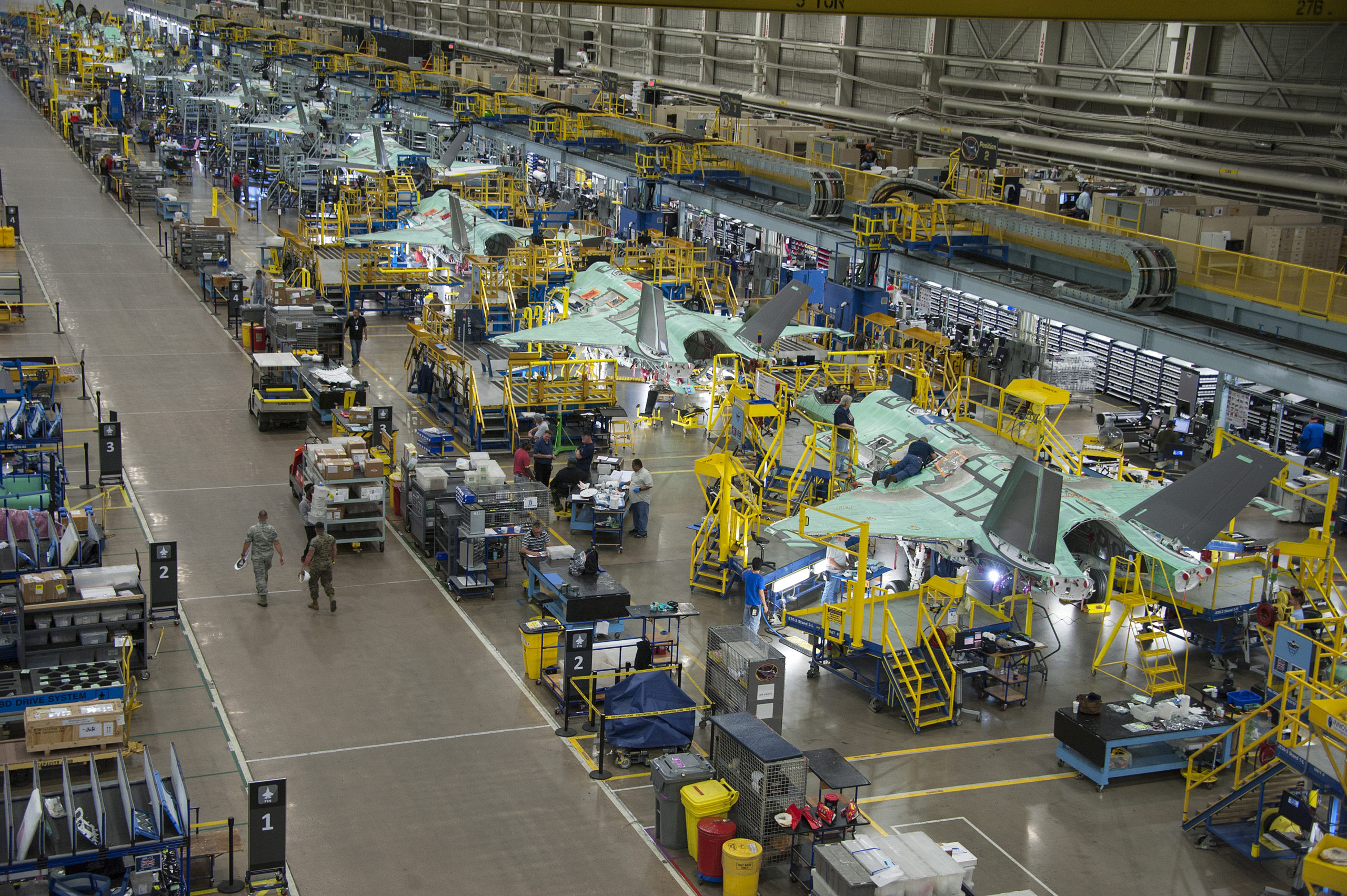Department of the Air Force Secretary Frank Kendall delivered a keynote address on “One Team, One Fight, One Year Later” at AFA’s Air, Space & Cyber Conference, Sept. 19, 2022. Watch the video or read the transcript below. This transcript is made possible through the sponsorship of JobsOhio.
If your firewall blocks YouTube, try this alternative link instead.
Air & Space Forces Association’s Gerald R. Murray:
At this time, I am pleased to introduce, a man who needs no introduction to us. Ladies, gentlemen, the 26th Secretary of the Air Force, the Honorable Frank Kendall. Secretary Kendall is truly a visionary leader who has served at various levels of government and industry and we are honored to have him kick off our 2022 Air, Space and Cyber Conference. Mr. Secretary, please come forward.
Frank Kendall:
Thank you, sir. Good morning.
Crowd:
Good morning.
Frank Kendall:
I’m very grateful for the opportunity to speak with you today. It means I survived my first year in office. Thank you to Chief Murray, Orville Wright, Doug Raaberg, for your leadership of the Air & Space Forces Association and constant support to our Air space forces. And thank you to everyone behind the scenes was worked so hard to put on this conference, which I noticed we don’t need to wear face masks. Yes.
When I stood before you a year ago, I had just joined the Department of the Air Force family. I have now lived through one of the DAF and the US Air Forces 75 years and one of the Space Forces, three years. A lot has happened in that year. We have encountered new challenges and existing challenges have evolved. I have done some of the things I told you I would do. Others are underway or planned. My highest priorities have not changed and they are still completely aligned with those of Secretary Austin as expressed in the National Defense Strategy and then as March 2021 memo to the department. First, the mission. Our pacing challenge is China, China, China. Next and always are people and teams. My goal here is one that every leader at any level should have, to leave the organization stronger than it was when I arrived.
As you’ll see, that covers a lot of ground. I’d like to give you a report today on where we are in each of these priorities and I’d like to discuss the work to come and how it will directly affect our Airmen, Guardians, civilian employees, and their families. I’ll try to give you a sense of what all this means to you. Before I do that, I want to say thank you to some of the wonderful leaders that I’ve gotten to know and admire over the past year. First, my senior leadership team: under Secretary Jones, General Brown, General Raymond. For the last year before I’ve met at the start of virtually every single workday, to think, to plan, to strategize and to collaborate on our shared goals and vision. It has been a fantastic partnership for which I am very grateful. You’ll be hearing from each of these leaders during the conference.
Under Secretary Jones will be discussing the global competition we were in. Jerome Brown will remind us of our heritage and that as we face new threats, the so-called impossible is a challenge we have met before and we’ll meet again. General Raymond will discuss how far the Space Force has come in just three years and point the way forward for the service and his successor. Since last fall, we’ve had almost a full complement of DAF senior political appointees confirmed by the Senate. I’m very grateful to have such a remarkable team of professionals finally in place and I’m anxiously awaiting the one assistant secretary of the Air Force we still have in the process to be confirmed. I’d also like to thank all our Airmen and Guardians, active, guard and reserve. Thank you for what you have done for 75 years and before and for what you will do for the years and the generations to come. You will keep America safe. Thank you.
Thank you also to our military… “queue music,” I didn’t do that. Thank you also to our military families, your supporters essential to the wellbeing of our Airmen and Guardians and to their ability to serve. For our DAF civilians who enable and support our men and women in uniform, thank you for your dedication and professionalism. Thank you also to our industry partners who provide the products and services we count on to do our jobs. Thank you to the many nonprofit groups who support our men and women in uniform. A special thanks to our civic leaders who work with us in communities across the nation. Thank you to our international partners and allies, many represented here today. Thank you for sharing our values and our goals as we confront threats around the world together. Finally, a personal thank you to our Board of Directors, the Congress, thank you for their support in ’22 and ’23.
For all of those associated with the Congress and for everyone I thanked, it’s been an honor to get to know you and to work with you over the past year in my capacity as Secretary of the Air Force. I would, however, like to single out one person for some special recognition. One of the members of our senior leadership team will be retiring from the military soon and as contributions to the nation to have been truly extraordinary. I’m proud to call on my friend and my colleague and I know that everyone he has touched throughout his career has benefited from that interaction, I know that I have. And I’m speaking of course, of the man who will hence forth be known as the father of the Space Force.
General “Jay” Raymond is the first chief of space operations. He is a very big human being in every sense of the word. Please join me for a standing ovation for the person who more than any other, brought the space force into existence and let it through its formative years.
Now we get the music. There we go.
We’re all delighted to have General’s Chance Saltzman moving fairly expeditiously through the confirmation process. Salty will have big shoes to fill when “Jay” retires later this year. Jay has done a job that no one has ever done before and he’s done it superbly. He built the world’s first base force and give it an incredibly strong foundation. I’ve been honored to have him on the Department of the Air Force’s One team.
Let me now give you an update on where we stand on the goals and priorities that I laid out last year. Then, I’ll spend some time talking about our efforts to improve the Department of the Air Force Enterprise with a particular focus on our Airmen, Guardians, and their families. I’ve said again for my first days on the job that my priorities were China, China and China. I’ve been beating the drum about China’s military modernization program for a long time, a dozen years, and I’d like to think that the message is starting to resonate.
I said last year that I would give a classified brief on Capitol Hill about the threat we face to anyone who would listen and many members of Congress have taken me up on that offer. Last week, we briefed the only oversight committee we hadn’t been able to schedule before, the Hack D. The threat brief gets the attention of people hear it, but one question of threat brief always provokes is, “So, what are you doing about it?” Last fall, I formulated seven operational imperatives, as vehicles to help answer that question. The list of seven, which I discussed at AFA in Florida last spring, represents a set of operational problems or potential capability gaps that the DAF needs to address in order to successfully deter aggression and if necessary, defeat it.
Very briefly, we had to get the space order of battle right to find the Department of the Air Force’s C3 Battle Management Modernization Program, acquire resilient ground and air moving target indication capabilities, define and procure the next generation air dominance family of systems to include an on-crew combat aircraft, provide resilient forward basing, mature the B21 family of systems and harden our ability to mobilize and transform to war against a peer competitor.
We have largely completed the initial round of work on the operational imperatives with a focus on identifying our needs for the FY 24 budget. We use those results to build our program objective memorandum. I know that the media people here have their pens out hoping that I’ll drop some hints, but I’m not going to. We are working within the Pentagon and the administration to build the President’s FY 24 budget and that is very much a work in progress. I can tell you that the operational imperatives will be reflected in the FY 24 Department of the Air Force budget requests and for the moment, that’s about as far as I can go. I will, however, make one related announcement. One of the findings of the operational imperative work to date is we have not appreciated the scale of the effort needed to modernize D staff C3 Battle management in a Jag C squared context.
Our efforts to date have not been adequately focused, nor are they been adequately integrated. As a result, I have appointed regular General Luke Cropsey, as a new integrating program executive officer for DAF C3 battle management. Luke will report directly to Assistant Secretary Andrew Hunter, but also for space systems to Assistant Secretary Frank Calvelli. He will have technical authority over the DAF C3 Battle Management Enterprise and take the lead in overall architecture and systems design, system engineering, configuration management and interface control. He will be the DAF’s interface to OSD and the other military departments for DAF Jag C Square technical development. To ensure general cropsey success, we will continue the collaborative operational and technical leadership team model used for the operational imperatives. John Cropsey will work with General Jeff Valencia and General John Olson, who will be the operational requirements leads for their respective services. To ensure that this critical effort to modernize DAF C3 battle management stays on track, the service chief and I will conduct quarterly reviews of the integrated profile of DAFC3 Battle Management Programs.
The DAF is a large ship that turned slowly, but to use the [inaudible 00:11:12] expression, ‘that helm is hard over’. We’ve identified the change we need to accelerate, to avoid losing. Now we have to resource that change and execute the plan to make it happen. We will continue to use the operational imperative framework, but for each imperative there will be a program of actions tailored to meet that specific imperative. As a result of our work to date, we have also initiated efforts to address the future of our electronic warfare suite of capabilities, our munitions roadmap and the future of our mobility and tank capabilities, all in the context of a rapidly changing and competitive threat. We will be reaching out to industry for your ideas, your concepts, your analysis, your products and technologies in each of these areas.
Let me turn now to our decisive national advantage against authoritarian competitors, our Airmen and Guardians. Our competitors are deterred from aggression, not just by weapon systems, but more importantly by motivated professional, empowered, and well-trained joint force. The entire leadership team of the DAF is committed to maintaining a high level of readiness in the air and space forces. To achieve this goal, you must first and foremost, recruit, retain, and support the world’s best Airmen and Guardians and their families.
I spent Saturday at NASCAR’s, Bristol Motor Speedway in Tennessee with some of our outstanding recruiters. The highlight of the day was interacting with those recruiters and with their families and with swearing in our newest Airmen and NA guardian. Next on the list of highlights, it was either meeting Richard Petty or getting a few laps around the track and the PACE car with Eric Jones. Eric is our driver for the Air Force sponsored car number 43. I haven’t decided which of those was a greater thrill yet. Richard Petty posted a picture on Twitter of the two of us talking and the caption read, “The King,” that would be Richard Petty, … meeting the secretary of the Air Force.” The first comment he got was that the caption should have been reversed. The secret of the Air Force meets the King. One of these people has a temporary job and the other is, well, the King.
It helps me keep my perspective and actually I don’t disagree with the sentiment that was expressed there. Seriously, our recruiters are doing a fantastic job in a very difficult environment. While recruiting has become a challenge across the entire DOD, the Air Force is generally in much better shape than other services and the Space Force is easily meeting its goals. We expect the Air Force active component to meet its recruiting goals for this year, but with less margin than we typically see and a downward trend that may pose challenges in the future. Part of this challenge is related to current conditions like a strong job market, combined with limited in-school recruiting opportunities as a result of COVID-19. However, there’re broader trends which demand our attention. We must all work to increase the propensity of young Americans to serve. We must help a broader population see themselves as someone who can succeed, grow and thrive by serving their country in uniform as part of a great team.
For young Americans who want an opportunity to solve some of the world’s most pressing problems, challenge themselves at a job unlike any other as members of a great team, The Air & Space Forces are where you want to be. I’m getting a lot of questions from the media about Top Gun, which some have noticed is actually a film about navy fighter pilots. My response, in case you’re asked this question, is that first of all, the Air Force has a lot more fighters than the Navy and you don’t have to live on a ship for months in order to fly them.
Not to knock my sister service at all, of course. We’ve challenged our recruiters to increase the diversity of our applicant pool. We can’t just say we want the best and brightest. We need to focus our investment and our outreach toward reaching the best and brightest from all of America. We recently updated the Officer Ascension applicant pool goals. These were last revised in 2014. Our outreach to top talent must take advantage of and attract the broad diversity of our country’s talents. The science is very clear on this: a diverse team is a stronger team, one able to leverage different perspectives, different backgrounds and different experiences to solve the toughest of problems.
With these efforts, we’ve seen significant increases in female officer ascensions. We’ve increased our partnerships with minority serving institutions and strengthen community outreach that connects prospective recruits with mentors, especially those with an interest in aviation and STEM based fields and we know the diversity of our force also includes the incredible perspective and expertise in our Air National Guard and Air Force reserves.
They are at the core of all our mission sets, seamlessly integrating into our operational and our strategic objectives while enriching us with their diverse experience and expertise countered from the private sector. To ensure we have the fully ready force we need, we are also working to remove the barriers, hurdles, and headwinds identified in the disparity reports we published over the past year and before. We want to ensure we have the right mix of skills that we need to be operationally successful and we want everyone to serve to their full potential. These efforts come in many varieties. For example, we are putting cyber officers into a broader range of positions where their expertise can inform senior decision makers. Designed to assist us in identifying barriers to inclusion, the DAF Hispanic Empowerment and Advancement Team or HEAT, help us to update uniform name tags with accent marks.
Getting the small things right does matter. It shows people they are valued parts of the team. As we continue to reexamine our personnel policies to ensure we’re removing barriers that might have disparate impacts, under Secretary Jones and General Brown have been leading the charge to ensure that our female aviators have more input in determining whether they fly or not after becoming pregnant, while taking into account safety and operational readiness.
One of the greatest incentives to continue serving is our Airmen and Guardians know that we don’t just train, educate and grow them as leaders. We also take very seriously our obligations to take care of their families. As I’ve traveled to dozens of bases around the world, I’ve listened to our emanate Guardians discuss the challenges that they and their families face. Secretary Austin has personally engaged all the Department of Defense leadership to address these challenges and the DAF is leaning in to lead the way. The most common concerns I’ve heard from Airmen and Guardians about our inflation, housing cost or conditions and childcare. The DAF leadership knows we can’t expect Airmen and Guardians to give their all to the mission when they are worried about paying for gas to get to work, finding childcare or providing their family a safe place to live. That starts with compensation.
With the FY 23 budget, we expect the largest pay raise we’ve seen in nearly two decades. We are working with the Office of the Secretary Defense to ensure basic allowance for housing also keeps space with costs. I’ve heard from the husbands and wives or our service members how frequent moves can lead to job uncertainty and insecurity, and so we are expanding our efforts to reduce barriers to spousal employment opportunities, including additional work on state reciprocity in professional licensing. We are also implementing the basic needs allowance program that provides supplemental income for military members and dependents whose gross income falls below 130% of the federal poverty line. The past several months of inflation has put unique pressures on the finances as some of our Airmen and Guardians in critical specialties. Our system to adjust special duty pay was out of sync, with the rapid changes in our economy brought on by COVID and the invasion of Ukraine. That’s why I’m announcing today that the DAF will restore all of the cuts to special duty assignment pay that were scheduled to take place on one October, including… Thank you.
I didn’t get any music for that one. Including those for our recruiters. To address childcare needs. We are investing significantly in a military construction budget that prioritizes child development centers. Expanding capacity won’t alleviate today’s staffing challenges, which have been exasperated nationally by COVID-19 and low unemployment. We are aggressively developing and will soon announce new incentives that we believe will increase staffing at CDCs and expand alternative childcare programs. To address housing needs. We are working with local providers and officials to increase the availability of off base housing. We are working with privatized housing companies to enforce our contracts to ensure that such housing meets the standards we require and that the tenant’s bill of rights is implemented and enforced. Through our military construction program, we are addressing infrastructure challenges to our basis, especially dormitories.
I may now turn to some more controversial subjects. One of the events of my first year in office has been the Supreme Court’s recent decision striking down Roe v. Wade.
We know that many Airmen, Guardians and their family members are worried about the impacts of the decision and the resulting proliferation of state laws that affect them very differently depending upon where they are stationed. This, of course, a subject with widely varying views across the country and indeed within the A space forces themselves. The DOD is fully engaged in exploring how to best respond to this situation to support our people, but in the meantime, we are committed to and have been providing complete, accurate and accessible information on current rights and benefits to the DAF. The Supreme Court decision does not change any healthcare benefits provided by the Defense Department, or our policies relating to emergency, convalescent and sick leave that members can use to obtain medical treatment including reproductive health treatment.
Now I’d like to touch on the scourge of sexual assault, sexual harassment and interpersonal violence, especially domestic violence.
The recently released report on sexual assault in the military makes it clear that our efforts to improve in this area have not been good enough. While the DAF may have substantially fewer reported incidents than our sister services and we should be encouraged by that result, the fact that incidents are increasing overall, must be addressed. We are moving out as quickly as possible to implement the independent review commission recommendations and the direction in the NDAA to establish an independent reporting and prosecutorial system. There is one thing I want to make extremely clear today: eradicating sexual assault and harassment and creating a command climate in which no one feels disrespected or unsafe, is a commanders and leaders core responsibility and that will not change. Let me say that again, eradicating sexual assault and harassment and creating a command climate in which no one feels disrespected or unsafe is a commander’s and leader’s core responsibility and that will not change.
The service chiefs, your senior enlisted leadership and I all expect commanders and enlist leaders to build and maintain organizations in which sexual assault, sexual harassment and interpersonal violence are neither condoned nor tolerated in any form. Our leaders, you, will be held accountable for this now and always. The formation of an independent reporting and prosecution chain does not relieve our leaders of this foundational command responsibility. While prevention comes first, you must also do everything we can to support survivors of sexual assault and other forms of interpersonal violence. Just last month in line with IRC recommendations, we launched an integrated response co-location pilot program at seven of our installations to increase the awareness, accessibility and support to survivors. The pilot physically co-locate several resources to help survivors navigate available resources and better access the support that they deserve. Over the next six months, we will collect feedback including data and key metrics to leverage and scale this pilot program.
We want to improve how we respond and take care of victims of violence or harassment. We owe all our Airmen and Guardians a work environment and a community that they can trust and we will provide it. We will ensure that Air & Space Forces our organizations everyone wants to be a part of and in which everyone is treated with respect. We cannot tolerate anyone in our ranks who does not live those values, no matter what other admirable things they have done professionally. This past year we changed our guidance on how to determine whether someone who has committed sexual assault can remain in the military, to make it much clearer that sexual assault and military service are not compatible.
One of the most difficult parts of my job has been the over a hundred emails I’ve received telling me that a suicide had occurred in the department and the letters that I write to the families, the loved ones of each Airmen or guardian we lose to suicide. The vast majority of these suicides are our youngest and most junior people and by far the dominant means of self harm is a firearm. We are committed to improving resiliency and addressing the mental health needs of our force. Our suicide prevention focus starts with implementing the White House strategy for reducing military and veteran suicides and builds on the CDC supported strategies. We are also looking at how to strengthen and scale some of our initiatives that are showing promise like True North, our integrated resilience program that embeds mental health care providers and spiritual leaders within our organizations. As some of our senior DAF leaders have made clear by example, mental health is health. Seeking care when you need it does not demonstrate weakness. It shows courage, sound judgment, and maturity.
Building the innovative and professional force we need, requires effective talent management that provides the mix of skills and expertise we need while giving our people relevant options and opportunities and encouraging retention. The DAF senior leadership is actively managing our promotion processes to ensure we have the right depth and breadth of expertise in all our ranks, particularly in leadership. For example, we must have enough general officer through proficiency in technologies and systems in areas like cyber or battle management, so that this expertise is not confined to nearly focused organizations but also routinely represented at the highest decision making levels. Ensuring our leaders have these types of capabilities is critical to effectively addressing the facing challenge. To better manage our talent, we are revamping the entire evaluation system, moving to a 21st century IT platform and shifting away from the formulaic bullet statement approach that we have used for some time.
We are moving to a clearer performance statement system based around the assessments of Airmen’s leadership qualities and ensuring leaders are accountable for their unit climates. On the civilian side of the organization, we are also building a variety of programs to increase the flexibility of our civilian workforce and bringing in much needed talent including the Cyber Accepted Service, the Civilian Short Term Experiential Program, the Premier College Intern Program, and the Science Mathematics and Research for Transformation scholarship per service program. All of these will improve our capacity to meet our facing challenge. We have the world’s best fighting force and it’s only getting better, but we cannot be complacent about any aspect of our readiness, both today and for the foreseeable future. I focused a lot on our people today, but it all comes back to your mission and our readiness to perform it. You think that calling our immanent Guardians are decisive national advantage is just a tagline, take a look at what’s happening in Ukraine.
We’re seeing the price rush is paying for failing to invest in its people. We’re seeing failure at scale in action and it’s very visible on the battlefield. Beyond that, we’re seeing the difference between those who are fighting for a cause and an organization and a team that they can believe in and those whose only motivations are survival and avoiding harsh discipline. Some of you may think we’re preparing for a fight that hasn’t started yet and may never even happen. Unfortunately, we are already in the midst of a battle over fundamental values, our nation’s core values of freedom and democracy.
I’m hopeful that we can deter any military conflict between Major Powers. Between the US and China or Russia, where authoritarian system of governments have the clear potential for aggression. To deter that if necessary, when you must both modernize the Air & Space Forces and ensure that our Airmen and Guardians are as ready as possible for the pure competitor that they may be asked to win against at any time.
Once again, we are dealing with aggressive and expansionary authoritarian powers, something we have not seen for decades. For many of us, for our entire lifetimes, history has taught us grim lessons about what happens when we ignore the threat with authoritarian aggression. Aggressive authoritarian powers don’t stop until someone stops them. We’re seeing that in Ukraine right now. Some of you heard me say this on Thursday at the Air Force tattoo, but it’s worth repeating. Since World War II, our world has experienced unprecedented peace and prosperity because a coalition of democracies led by the United States has enforced rules based interactions between states to prevent aggression. We were strong enough to win World War II, defeat the Soviet Union in the Cold War and deal with all the threats we have seen since, but our work is not done. Yesterday I saw a P51 Mustang flying formation with an F35.
For me, it was an emotional event. Eight decades ago, not terribly long before I was born, air power was at the very heart of saving the world from tyranny and an American Air Force was born from that moment. Today, that Air Force is joined by a space force that shares with the Air Force both a long heritage and the great burden of protecting our freedom. That burden is greater than it may ever have been, but we are ready for it. You are ready for it. I’m proud to be part of the Air Force family as we celebrate the 75th year of the Department of the Air Force. Fly, fight and win, air power anytime, anywhere. Semper Supra. One Team, One Fight. Thank you.

